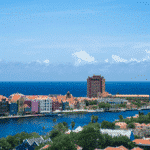At present, approximately 50 countries have liberalized their abortion laws, with women’s access to abortions having progressed over the past few decades. While some changes in the abortion laws around the world have taken some time to come into force, with gradual legislation upheld over a period of time, many modifications have been transformational and have removed all restrictions on abortion in favor of women’s reproductive freedoms. Almost 90% of nations allow abortions, at the very least when a woman’s life is endangered by the pregnancy. Other reasons include when the health of the women is at risk during the pregnancy or in situations of rape or incest.
In this article, we’ll provide you with key information on the abortion laws, including the countries where abortions are legal, prohibited, and in certain circumstances, plus an overview of the current state of affairs on the topic.
What does abortion law look like around the world?
The abortion laws will vary from country to country, but most countries allow abortion, at least under some circumstances. On a global level, only 24 countries have a complete ban on abortion.
The past 50 years have seen a move towards the liberalization of abortion laws, particularly in the industrialized world. According to the World Health Organization (WHO), approximately 73 million abortions take place across the globe every year. This is approximately 39 abortions per 1000 women globally and this rate has remained fairly stable since 1990.
It is particularly interesting to note that between the years 1990 and 1994 and the years 2015 and 2019, the average abortion rate in countries that have, in general, legal abortions (excluding China and India) declined by 43%. In contrast to this, in countries that have severe restrictions on abortion, the average abortion rate increased by around 12%.
The abortion laws in most industrialized countries allow abortions without restriction. However, around 100 countries have some restrictions in place, which usually allow abortion only in certain circumstances. These can include socioeconomic reasons, sufficient risk to the physical or mental health of the woman, or the presence of fetal anomalies. However, for this last point, the legal language on fetal impairment is often vague, which can lead to uncertainty for medical professionals when deciding on whether or not certain abortions are legal.
Access to safe abortions was established as a human right by several international frameworks, the UN Human Rights Committee, and regional human rights courts, which include the European Court of Human Rights, the Inter-American Court of Human Rights, and the African Commission on Human and People’s Rights.
To provide you with a brief history on the subject, the 1994 International Conference on Population and Development that took place in Cairo saw 179 governments signing a program of action that included a commitment to prevent unsafe abortion. Before this, the WHO had initially recognized unsafe abortion as a public health issue back in 1967, and in 2003 it developed technical and policy guidelines that included a recommendation that the abortion laws in countries protected women’s health.
The UN Population Fund has addressed the unmet need for family planning as a means to protect the mother’s life and reduce maternal mortality while reducing abortions by up to 70% in developing countries.


What have been recent trends?
On a global scale, abortion laws have moved towards liberalization. Since 2000, 38 countries have changed their legislation regarding abortions, and, all but one – Nicaragua – have expanded the legal grounds in which women can have access to abortion services.
To provide you with some examples, since 2020, Argentina and Thailand have legalized abortions, with some gestational limits, South Korea and Mexico have decriminalized abortions, New Zealand has eased its abortion restrictions, and Colombia has made abortion legal for up to 24 weeks of the pregnancy.
While greater freedoms for women’s reproductive rights have been on the rise across the world, some countries, which include the United States, are moving against the tide and enacting policies to tighten restrictions.
Abortion in the United States
So, let’s hone in on the USA and the recent decision made by the Supreme Court on 24 June 2022 and the overturning of Roe v. Wade, after almost 50 years where it mas made a constitutional right to have an abortion. Simply put, under the ruling, the Constitution guarantees the right to choose to have an abortion, although there were some regulations after the first trimester of the pregnancy. Under this decision, the United States of America became one of the first countries to liberalize its abortion laws, alongside other European nations. The 1992 Planned Parenthood v. Casey reaffirmed a woman’s right to have an abortion but also allowed for some restrictions, such as waiting periods and parental consent.
Across the US, the abortion laws have varied and, for decades, states have introduced and implemented various laws to regulate abortions. Some states have protected abortion access, while others have imposed regulations on abortion providers and have sought to prohibit abortion at earlier stages of the pregnancy. This resulted in 160 clinics closing and cases where some states were left with only one abortion provider. In recent years, many states have passed increasingly strict abortion laws, as is the case in Oklahoma, where the governor signed legislation to ban all abortions after six weeks, with the exception of cases of life-threatening pregnancies. The law resembles one that was passed in Texas in 2021. Both allow private citizens to sue anybody that they suspect of having provided or having had facilitated an abortion.
The reversal of the Roe v. Wade allows the 13 so-called trigger states to either ban abortion automatically or within 30 days. While all of these state laws exempt abortions in cases of life-threatening pregnancies, many do not exempt pregnancies that are caused by rape or incest. Anti-abortion advocates have praised the Supreme Court’s decision to overrule the Roe v. Wade ruling, while Democratic lawmakers and abortion advocates have condemned the decision.


Abortion healthcare
Along with more progressive legislation regarding abortions in many countries, the quality and safety of abortion procedures have also improved, alongside maternal survival.
However, the safety of abortion procedures varies considerably from country to country between countries where abortion is generally legal and those with greater restrictions on abortions. Almost 90% of abortions in countries where the abortion laws are liberal are deemed to be safe, compared with only 25% of abortions in countries where the abortion laws have banned the procedure.
WHO has stated that approximately 5-13% of maternal deaths worldwide are the result of complications that have arisen from unsafe abortions, the majority of which are in developing countries.
While some countries have displayed progressive legislation regarding abortions, there has been strong opposition in some constituencies and, recently, a number of countries, particularly those with autocracies, have moved against pro-abortion and women’s reproductive rights. This was clear to see with the victory in June 2022, when the US Supreme Court overruled the 1973 decision Roe v. Wade that has been standing for almost 50 years and which guaranteed the constitutional rights to abortion.
Countries that allow abortion
Here we’ll provide you with a full rundown of the countries where abortion is permitted and where abortion is completely prohibited according to the abortion laws in place. This information is collated from the Center for Reproductive Rights.
Note that the gestational time limits will vary and that, in some countries, a parent or spouse’s authorization is required. So, which countries is abortion legal in? The following table will provide you with a complete list of countries that allow abortion.
List of countries that allow abortion | ||||
Albania | Cuba | Ireland | New Caledonia | Spain |
Argentina | Cyprus | Italy | New Zealand | Sweden |
Armenia | Czech Rep. | Kazakhstan | Northern Ireland | Switzerland |
Australia | Dem. People's Rep. of Korea | Kosovo | Norway | Tajikistan |
Austria | Denmark | Kyrgyzstan | Portugal | Thailand |
Azerbaijan | Estonia | Latvia | Puerto Rico | Tunisia |
Belarus | France | Lithuania | Rep. of North Macedonia (formerly Macedonia) | Turkey |
Belgium | French Guiana | Luxembourg | Romania | Turkmenistan |
Bosnia-Herzegovina | Germany | Moldova | Sao Tome & Principe | The United States* |
Cambodia | Greece | Mongolia | Serbia | Uruguay |
Canada | Guineau-Bissau | Montenegro | Singapore | Uzbekistan |
Cape Verde | Guyana | Mozambique | Slovak Rep. | Vietnam |
China | Hungary | Nepal | Slovenia | |
Croatia | Iceland | Netherlands | South Africa | |
*Regarding the United States, the Roe v. Wade decision, which had established the constitutional right to abortion in 1973, was overruled by the US Supreme Court on June 24, 2022.
In some countries, abortion is covered by most health insurance plans. This is the case in France, for example. Most countries will have organizations that were set up to support women who are considering having abortions. These organizations can provide emotional support, along with information on the procedure and help with finding a qualified doctor.
Countries that allow abortion on socioeconomic grounds
Some countries allow abortion depending on the woman’s social and economic situation. This takes into account the potential effects of pregnancy and childbearing. These countries are shown below.
List of countries that allow abortion on socioeconomic grounds | |
Barbados | India |
Belize | Japan |
Ethiopia | Rwanda |
Fiji | Saint Vincent and the Grenadines |
Finland | Taiwan |
Great Britain | Zambia |
Hong Kong | |
Countries that allow abortion when the woman’s life is at risk
The following countries allow abortion if the woman’s life is at risk. In Brazil, for example, the abortion laws state that abortion is illegal, with the exception of situations involving rape, danger to the mother’s health, or anencephaly (a condition where the fetus lacks part of the brain or skull). In such circumstances, the woman will need to obtain consent from a medical professional and at least three more clinical specialists.
List of countries that allow abortion when the woman’s life is at risk | |||||
Afghanistan | Chile | Iran | Mexico | Paraguay | Tanzania |
Antigua & Barbuda | Côte d’Ivoire | Kiribati | Micronesia | Solomon Islands | Timor-Leste |
Bahrain | Dominica | Lebanon | Myanmar | Somalia | Tuvalu |
Bangladesh | Gabon | Libya | Nigeria | South Sudan | Uganda |
Bhutan | Gambia | Malawi | Oman | Sri Lanka | United Emirates (UAE) |
Brazil | Guatemala | Mali | Panama | Sudan | Venezuela |
Brunei Darussalam | Indonesia | Marshall Islands | Papua New Guinea | Syria | Yemen |
Countries that prohibit abortion
As mentioned previously, there are 24 nations in the world where abortion is completely prohibited. In Europe, these countries are Andorra and Malta, in Africa, Senegal and Egypt, and in Asia, the Philippines and Laos. In what countries is abortion not legal? The following table will provide you with a complete list of countries.
List of countries that prohibit abortion | |||
Andorra | Haiti | Malta | Senegal |
Congo (Brazzaville) | Honduras | Mauritania | Sierra Leona |
Curaçao | Iraq | Nicaragua | Suriname |
Dominican Republic | Jamaica | Palau | Tonga |
Egypt | Laos | Philippines | West Bank & Gaza Strip |
El Salvador | Madagascar | San Marino | |
The World Health Organization (WHO) has reported that there is little to no correlation between global abortion rates and whether abortion is legal under the abortion laws in a specific country.
Abortion procedures happen regardless of the abortion laws in place. The important point is the safety of those abortions is impacted by their legality.
In countries where abortions are illegal, the illegal or even “homemade” abortion choices that women go through that do not have access to legal abortions are far riskier and less successful than legal options that are carried out by qualified medical professionals in a clinical setting.
90 million, or 5% of all women of reproductive age, live in countries where the abortion laws in place prohibit abortion procedures.
The Center for Reproductive Rights has stated that while 970 million women, or 59% of women of reproductive age, live in nations where there are lax restrictions on abortions, 41% of women do not have access to abortions. 700 million women of reproductive age are impacted by not having access to safe and legal abortion services.
Further information
For further information that may be of interest to you, you can check out the following articles:
Frequently asked questions about the abortion laws:
Which countries in Latin America allow abortion?
Which Latin American countries allow abortion? In Argentina, abortion was legalized on 29 December 2020. Cuba legalized abortions in 1965, as did Guyana in 1995, Uruguay in 2012, and French Guiana, as part of France, in 1975.
How many countries do not allow abortion?
What countries don’t allow abortions? There are 24 nations worldwide where abortion is completely prohibited. In Europe, these countries are Andorra and Malta, in Africa, Senegal and Egypt, and in Asia, the Philippines and Laos.


